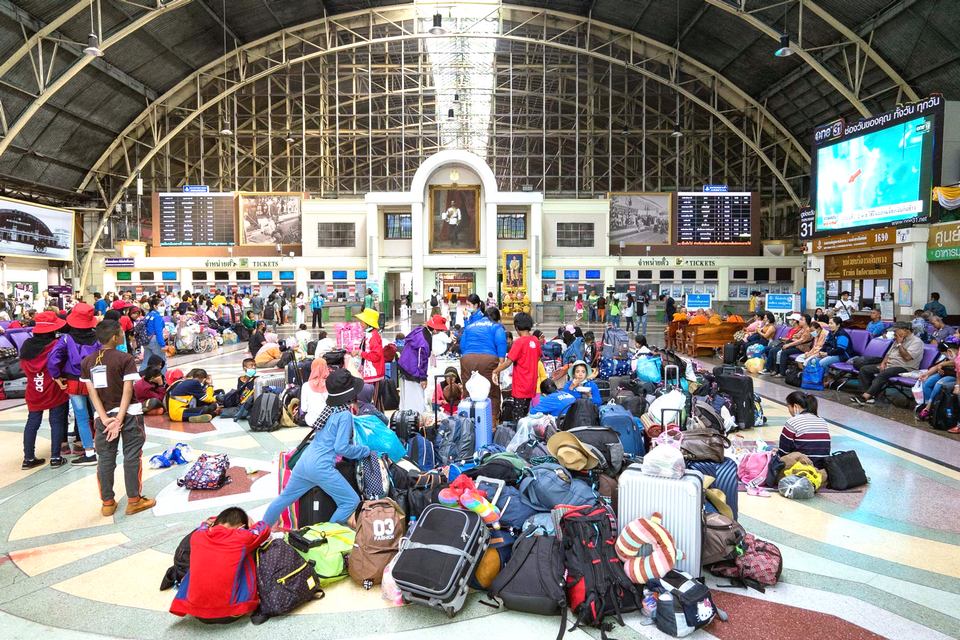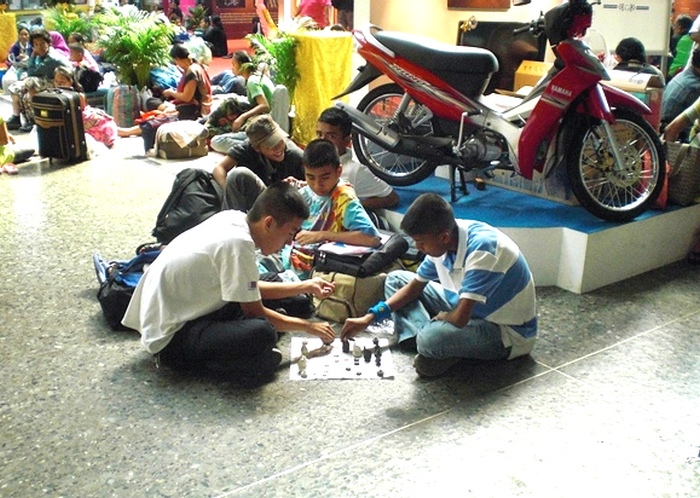
It’s the end of the line. Bangkok’s much-loved Hua Lamphong railway station will be shunted into the sidings by the end of 2021. The transport minister Saksayam Chidchob points to the State Railway of Thailand’s huge debts: the company hasn’t made a profit since 1951. But there’s the tempting commercial prospect of 121 rai of real estate in a plum area of the metropolis. Commuters will grumble that the closure of Hua Lamphong will make getting to work much more difficult for many. Sorry about that is the likely response.
The doomed rail hub has quite a history. Opened to the public in 1916, it was partially modeled on Frankfurt’s Hauptbahnhof and champions the neo-Renaissance creation of Italian architect Mario Tamagno. Its marble floor, vaulting roof and stained-glass windows have magically survived somehow. The Japanese occupation troops built a dug-out air raid shelter here which took a direct hit from American bombers in 1944. The death toll was over 100.
Hua Lamphong, of course, will have a worthy successor in the shape of the 26 platforms of Ban Sue grand station which lies eight kilometers to the north. It will be the largest rail hub and junction in Asia with maintenance depots for both electric and diesel trains. It is already familiar to many because of its use as a vaccination center during the Covid crisis. Some of the snack bars and cafes are already doing a roaring trade.

At its height, Hua Lamphong serviced 70,000 passengers a day. That total is likely to be exceeded soon as Ban Sue is a new airport lookalike with all the right connections to the BTS Skytrain and the Metropolitan Rapid Transit subway. Inconvenienced commuters to some city center districts are being told there may be discounts on specially-provided buses for those disembarking at Ban Sue. Not sure yet, says the ministry.
For many expats Hua Lamphong is full of memories, such as the long rail trips to Butterworth in Malaysia, en route to the regular visa runs to Penang which were well-nigh compulsory in the 1990s. Or the “high-speed” overnight journeys to Chiang Mai which never gathered enough steam to reach 40 kilometers per hour, or were delayed by cows taking a nap on the level crossings. A bygone era indeed.
 |
 |
 |





